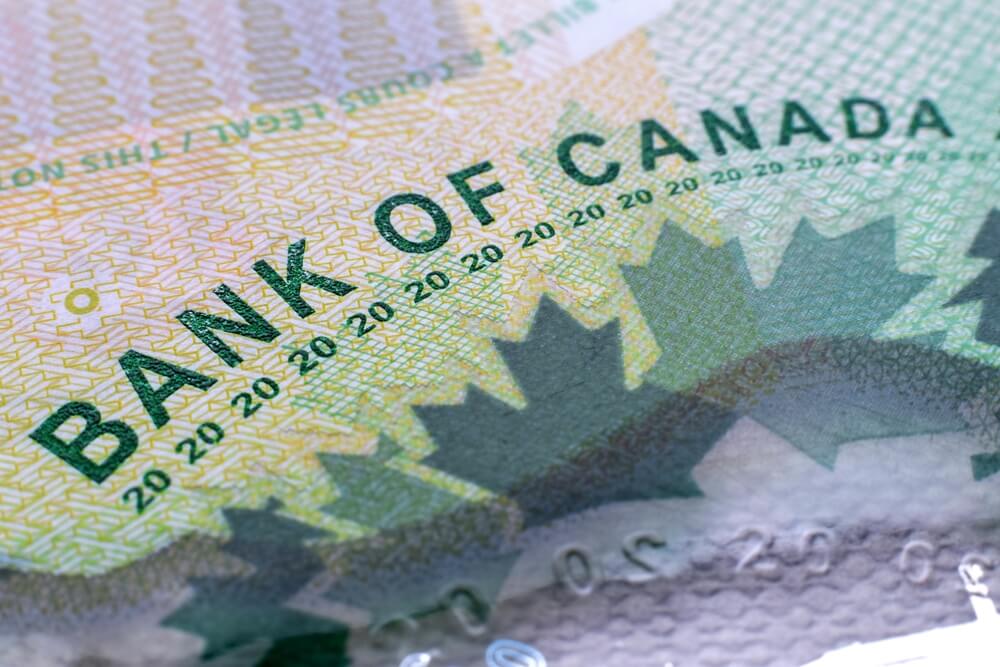No Tickets? Yes Savings!
Clean driving history can save you up to $500 on car insurance
Compare car insurance quotes from companies across Canada
On this page:
- What is a car insurance quote?
- Factors that affect your car insurance quotes
- How to use RATESDOTCA to get the cheapest car insurance quotes
- RATESDOTCA's Best Home and Auto Insurance Awards
- Who provides car insurance quotes?
- Why should I compare car insurance quotes from different insurance companies?
- Types of car insurance quotes
- Types of car insurance coverage in Canada
- Car insurance in Canada: A national picture
- Average car insurance premium by province
- Car insurance quotes by company
- How to get the cheapest auto insurance quote
- Frequently asked questions about car insurance
- How much does it cost to compare car insurance rates on RATESDOTCA?
What is a car insurance quote?
A car insurance quote estimates your premium for a car insurance policy. Insurance companies calculate the quote using the information you provide, such as your age, the car you drive, your driving history, and your postal code. Every insurer uses a unique formula to calculate your car insurance quote, so even if you provide the same information to different insurance companies, no two quotes will look the same.
After applying for a policy, an insurance company's next step is to figure out how much risk you pose to them — what is the likelihood of you getting into a car accident, and how expensive will the damage be?
Insurance companies use roughly the same methodology to assess risk. Here are the main things that influence your rate:
- Your age
- Your forward sortation area (the first three letters of your postal code)
- How long you've had your licence
- The type of car you're looking to insure
- Your insurance history
In addition to the criteria above, car insurance companies in Ontario can also use the following factors to calculate your rate:
- Your gender
- Your licence level
Depending on your answers, insurers will place you in a specific rating group (people with similar profiles). Your rating group determines how much you pay for coverage.
Insurance companies have an ideal customer they want to attract. Most insurers reserve their lowest rates for experienced drivers over 50.
On the other hand, some companies are willing to assume more risk, so they offer inexperienced drivers coverage at competitive rates. You can't tell which insurer will provide you with the lowest rate based on their advertisements. It's better to compare rates from multiple insurance companies.
Use our car insurance calculator to calculate and compare 50+ auto insurance quotes from Canadian car insurance companies to find your best quote.
Factors that affect your car insurance quotes
Insurance companies consider many factors when calculating your insurance rate.
- Vehicle type: The type of vehicle you drive impacts the premiums you pay. Some cars are associated with additional risks, including their likelihood of being stolen, how much they cost to repair, and their safety rating and features. There is also some perceived behavioural risk associated with different vehicles. Insurers are more willing to offer low rates to drivers with "sensible" cars. As a result, when shopping for insurance, you might notice your dad's 10-year-old minivan suddenly seems more appealing.
- Commute distance: How much you drive will also affect your premiums, which is why insurers always ask for your anticipated vehicle usage. The less you drive, the cheaper your car insurance premium is. The more you drive, the higher your chance of being involved in a car accident, and the more you will have to pay for insurance.
- Driving history: Individuals with clean driving histories can expect to pay lower premiums than those with tickets and accidents on their record. The number of years you have had a licence also matters.
- Demographics: Where you live makes a difference. Areas with higher occurrences of theft and collisions result in higher premiums. Your age can also come into play. Drivers aged 25 or older will generally pay less to insure a vehicle. Statistics show that younger, less experienced drivers are more likely to be involved in traffic collisions.
- Coverage type: The larger the scope of the coverage and the higher the coverage limits you choose, the more you will pay for insurance. The deductible, which is the amount you must pay out of pocket following a claim, also influences your insurance premium. The insurer will offer a cheaper rate if you are willing to take on more risk with a higher deductible.
- Discounts: Most insurance companies will provide discounts if you meet specific criteria. For example, if you have winter tires or more than one vehicle, you may be eligible for discounts. When you get quotes with RATESDOTCA, we ask the same questions as the insurers to ensure you are getting the lowest possible price.
- Age and gender: Teens and twenty-somethings pay the most for car insurance. Within that demographic, males can expect to pay significantly more than females. By age 35 and beyond, the differences between men and women mostly even out. That said, men should expect to pay a little more for their coverage. Insurance companies are allowed to set their own rates for non-binary drivers but only if it's in line with what has been approved by provincial regulators. Insurance providers often charge the low end of the average male or female rate.
- Marital status: In most of Canada, insurance companies are allowed to ask about your marital status to set your auto insurance premium. The exceptions are Manitoba, Nova Scotia, and B.C. One explanation why insurance companies care about your relationship status is that spouses will likely take turns driving the vehicle, which changes the risk profile of insuring that vehicle. Luckily for single drivers, just because a company can ask about marital status doesn't mean they will. Insurance providers all have slightly different formulas for evaluating risk and setting premiums. That's why it's crucial to compare rates from multiple companies to find the lowest price.
- FSA: This stands for Forward Sortation Area, which is represented by the first three characters of your postal code. Insurance providers look at these geographic markers to help set your rate since location affects the probability of future claims. Insurers look at the following characteristics in an FSA to calculate risk: the number of vehicle thefts in the area, the amount the insurer has paid out to policyholders, and incidences of insurance fraud. Generally, drivers in commuter cities pay higher insurance rates than drivers in rural areas.
- Driving experience: The longer you've held a licence and car insurance, the cheaper your insurance will be. The inverse is also true: If you don't have a lot of experience driving, insurance companies view you as riskier to insure. For example, if you get your driver's licence in your thirties, your rates may be comparable to drivers in their twenties.
- Claims history: An insurance claim is a request by a policyholder to the insurance provider for compensation for a covered loss. Insurers look at your history of claims and use it as an indicator of what to expect from you in the future. Suppose you have a history of making at-fault claims. In that case, your insurance company will view you as someone who is high-risk to insure. It will charge you non-standard (i.e., above average) rates for coverage. It's important to note that this holds even if your insurer validates a claim and provides compensation. If you are at fault for the incident, your insurance rate will go up at renewal. (You can protect your record by purchasing an accident forgiveness endorsement.)
What people say about our quotes

Based on 6,448 reviews

Amazing
Very helpful and easy to use
Safe travels

Easy quick selection of rates
Easy quick selection of rates
J K

Great help in finding the best rate!
Great help in finding the best rate! Thanks a lot!
Ruthielyn opina

I like how I can quickly I can select…
I like how I can quickly I can select travel insurance. The web site had an issue earlier but seemed to correct itself.
Dennis

prompt service
Respnded quickly, recommended company was excellent
Michael W.

Save time and money with rates.ca
I always use rates.ca for my travel insurance. They compare rates from several insurance companies and I can choose the package that suits my needs. I save time, frustration, and best of all, money. Thank you rates.ca, I will definitely be using your service again in the future.
customer
Recent car insurance quotes in Canada

Recent auto Insurance Quote from Barrie, Ontario
Male, 23 years old
2009 FORD F150 XLT REG CAB 4WD
July 11, 2025
Cheapest Quote
$ 150 / month
$ 1,801 / yearAverage Quote
$ 215 / month
$ 2,577 / yearSavings
$ 65 / month
$ 776 / year
30 %
Recent auto Insurance Quote from Peterborough, Ontario
Female, 28 years old
2010 NISSAN SENTRA 2.0 4DR
July 11, 2025
Cheapest Quote
$ 252 / month
$ 3,018 / yearAverage Quote
$ 313 / month
$ 3,755 / yearSavings
$ 61 / month
$ 737 / year
20 %
Recent auto Insurance Quote from Garson, Ontario
Male, 26 years old
2021 BMW X5 40I 4DR AWD
July 11, 2025
Cheapest Quote
$ 262 / month
$ 3,142 / yearAverage Quote
$ 637 / month
$ 7,642 / yearSavings
$ 375 / month
$ 4,500 / year
59 %
Auto insurance quotes are compared from CAA, Coachman Insurance Company, Echelon Insurance, Economical Insurance, Gore Mutual, Pafco, Pembridge, SGI, Travelers, Zenith Insurance Company
Who provides car insurance quotes?
There are more ways than ever to get car insurance in Canada. Here's an overview of the four primary providers of car insurance quotes in today's marketplace.
- Insurance brokers. Brokers sell insurance, but they're not tied to an insurance company. Brokers are self-employed professionals who can show you quotes from multiple companies; it's the old-school way to shop the market. One pro of using a broker is that they still work in person. A downside to doing things the old-school way is that brokers charge fees for their services, which could diminish any savings you may find by working with them. They earn commissions from insurance companies; however, the law prevents brokers from recommending one insurance company over another if it's not in your best interest.
- Insurance agents. An agent is an employee of an insurance company. They can only show you the products from the company that employs them. The upside is that agents always have the most up-to-date information on the company's latest products and discounts. Agents also work on commission, but unlike brokers who must work with insurance companies to complete a policy purchase, insurance agents have the power to complete the sale on their own.
- Direct writers. A direct writer is a type of insurance company. They only sell their own insurance products. The experience of buying insurance from a direct writer is more hands-off. Direct writers exist as online entities that call centres support. Since they have fewer staff and no brick-and-mortar locations open to the public, insurance from a direct writer is often cheaper. Like an insurance agent, a direct writer is limited to selling products from one provider. This means they're restricted from helping you shop the whole market.
- Insurance comparison site. An insurance comparison website is a term that can refer to a site like RATESDOTCA, also known as an insurance aggregator site. Comparison sites act as a one-stop shop for insurance seekers. They gather rates from different sources — brokerages, insurance companies, direct writers — and organize them in one place, displaying the lowest rates first. The service is free to consumers, while insurance providers pay aggregation sites after getting a new client.

Why should I compare car insurance quotes from different companies?
Which car insurance company is right for you? It's impossible to know for sure if you don't shop the market.
Insurance companies charge different rates for the same coverage. That means there are savings to be found. Last year, drivers who shopped for car insurance quotes on RATESDOTCA saved an average of $882 on their annual premium.*
RATESDOTCA makes insurance transparent, simple, and fun. By comparing quotes, you can easily see which company offers you the best insurance rate based on your unique driving history and insurance needs.
Find out why people trust us to find the cheapest car insurance quotes in Canada and compare rates today. Ready? Let's get started.
Types of car insurance quotes
Private vs. public car insurance quotes
Ontario, Alberta, the Maritimes, and the territories have private insurance markets, meaning you can get quotes from multiple insurance companies. Ontario's car insurance market is the largest in Canada, with the most insurance companies competing for business.
British Columbia, Saskatchewan, and Manitoba have public insurance systems, meaning that Crown corporations provide driver coverage.
Quebec has a hybrid system. The Société de l'assurance automobile du Québec, a Crown corporation, provides partial accident benefits. Third-party liability coverage, which is mandatory, can only be bought through a private insurance company. Quebec drivers can only buy optional car insurance coverages from private insurance companies.
Regardless of whether your province has a private, public, or hybrid system, drivers in Canada end up with insurance policies that mostly resemble each other. The process of obtaining a quote differs based on which regime exists in your province. The insurance-buying process in public car insurance systems happens when you register your vehicle. Whatever the province charges you is the final price — you can't shop around.
In the private system, vehicle registration takes place separately from the insurance-buying process. You can buy insurance directly from an insurance company or shop around using a rate comparison site and see which provider offers the lowest rate.
Personal vs. commercial vs. ride-sharing car insurance quotes
There are different types of quotes you can get depending on how you use your car. We'll explore each one.
Personal car insurance quote
Car insurance for personal use goes by different terms in the insurance industry. You might hear an agent or broker refer to it as insurance for a "private personal vehicle" (PPV) or as a "personal line." Most people need this type of car insurance. A personal-use vehicle is for commuting to and from work, running errands, and pleasure (road trips, for instance). Rate comparison sites mainly cater to people seeking insurance for their own cars.
Commercial car insurance quote
If you own a business that requires the daily use of a company-owned vehicle, you need commercial car insurance. A personal car insurance policy won't provide coverage if you're involved in an accident with the company car. Rate comparison sites often don't offer quotes for such policies. Still, they can refer you to a broker who specializes in commercial insurance. The broker can then show you quotes from various commercial car insurance companies.
Ride-sharing car insurance quote
This insurance product is a complicated one. Think of ride-sharing insurance as more akin to an endorsement (an optional coverage that you layer on top of your standard policy). Because of that, you can't purchase it from an insurance company other than the one that provides your base policy. This makes it challenging to shop the market for the lowest ride-sharing quote. However, some ride-sharing platforms have taken the initiative to extend insurance coverage to drivers, making getting insurance less hassle.
Suppose you're driving for a platform that does not offer insurance through the app. The insurance company that provides your personal policy might agree to extend some coverage while driving for the app. Still, you must notify your insurance company before you become a driver for the ride-sharing platform.
Even if you drive for an app that provides insurance, you still need to notify your car insurance company before becoming a rideshare driver. Your insurance company could cancel your coverage otherwise.
Standard and non-standard car insurance quotes
A standard quote can refer to a standard auto insurance policy or a customer deemed to be at average risk to insure.
There are three tiers of clients in the insurance world: preferred, standard, and non-standard.
Preferred clients will receive a preferred auto insurance policy. They have a long insurance history and have had no accidents or only one or two minor ones.
A non-standard policy is insurance lingo for a policy created for a person considered risky to insure.
All three types of customers will have access to the same kinds of coverage. However, the amount the insurance company will charge each tier will vary.
Standard clients will get an average rate, while preferred clients will access the company's lowest rates. Non-standard clients will pay the most for identical coverage and have to pay higher deductibles.
Insurance companies will label you as high-risk if the following incidents are on your driving and insurance records:
- A licence suspension or revocation
- Numerous traffic violations or speeding tickets
- Driving under the influence
Types of car insurance coverage in Canada
Mandatory coverages
Every Canadian province and territory requires drivers to have car insurance. The types and amounts of coverage needed vary by location.
Mandatory car insurance requirements typically include the following coverages:
Third-party liability: This coverage protects against losses incurred from third-party claims when you're at fault for causing an accident. This includes damage to someone else's property, bodily injury or death. Your auto insurance quote will always include third-party auto insurance coverage since it's mandatory across all provinces and territories in Canada.
Direct compensation-property damage (DCPD): This coverage means the insurer compensates you directly when your vehicle is damaged in an accident for which you are not at fault. It covers the damage to your car, its contents and the loss of use of your vehicle. Property damage coverage is mandatory in most provinces.
Uninsured automobile protection: This coverage protects you if you get in an accident with someone who does not have valid insurance coverage. It can also protect you if you're the victim of a hit-and-run.
Accident benefits: This coverage protects you from injury in a collision, whether you are the driver, a passenger, a pedestrian or a cyclist. There are four primary accident benefits: income replacement, medical, death/funeral, and miscellaneous.
Optional car insurance coverage
These types of coverage are usually optional and can be added to a car insurance policy if you want extra protection. Note that in some provinces or territories, these coverages may be mandatory.
Collision coverage: This coverage protects your vehicle against damage from a collision with an object (like another car). With this coverage, your provider will pay to repair or replace your vehicle up to its actual cash value, regardless of who is at fault. Collision insurance is not mandatory, except in Manitoba.
Comprehensive coverage: Comprehensive insurance covers non-collision damage to your vehicle, such as theft, hail, vandalism, etc. Comprehensive insurance is only mandatory in Manitoba.
Specified perils coverage: This coverage protects against damages caused by named perils, such as theft, attempted theft, explosions and natural disasters like fire or lightning. Only perils specified by the policy are covered.
All-perils coverage: This coverage is a combination of both collision and comprehensive insurance. All-perils coverage protects your vehicle from all causes of loss except those directly mentioned as exclusions in your policy. It also provides additional protection if your car is stolen or damaged by another driver.
Endorsements
Insurance endorsements are another optional coverage type, often referred to as "riders."
These coverages are purchased in addition to your base policy and change the terms of the contract. Endorsements can be used to add, delete, alter, or exclude coverage and adding them will increase the cost of your insurance.
Endorsements can be added at any point, meaning you don't have to wait for your policy's renewal period to adjust your coverage.
Here are the most common endorsements available to drivers in Ontario and Alberta.
Ontario endorsements
- OPCF 20: Coverage for Transportation Replacement: Provides replacement transportation and rental car insurance if you get into a car accident or if your car is stolen.
- OPCF 27: Liability for Damage to Non-Owned Automobile(s): Provides comprehensive collision coverage for vehicles you rent or borrow. Your third-party liability and accident benefits will also be extended to your temporary vehicle. Coverage is active while driving in Canada and the U.S. If you have this endorsement, you don't need to purchase insurance from a car rental service.
- OPCF 39: Accident Waiver/Forgiveness: Your claims and driving histories greatly impact how much you pay on car insurance. If you get into an accident, your premium will likely rise upon renewal. Adding this endorsement will ensure that your premiums will not increase in the event of your first at-fault accident and your first claim.
- OPCF 43: Waiver of Depreciation: This endorsement prevents your insurance company from factoring in depreciation from the value of your car when settling for damage or loss. You'll be able to replace your car with one of the same make and value.
- OPCF 44R: Family Protection Coverage: This endorsement provides extra compensation if you are involved in an accident with a driver who doesn't have adequate insurance coverage to cover the full cost of your medical expenses. This endorsement will bridge the gap so that you receive the outstanding funds.
Alberta endorsements
Alberta has two categories of endorsements: Standard Endorsement Forms (SEF) and non-standard endorsements.
Non-standard endorsements have conditional approval from the Superintendent of Insurance and are offered by insurance companies that look to address unique coverage needs. SEFs have been approved for use by the Superintendent of Insurance and are commonly available in Alberta. The most popular endorsements in Alberta are listed below.
- Comprehensive Cover Limited Glass (SEF 13D): Instead of increasing your coverage, this endorsement can either limit or exclude coverage for glass damage caused by rocks, chips, and other "debris." By adding this to your policy, your premiums are reduced.
- Loss of Use (SEF 20): Provides daily reimbursement for taxis or rental cars if your vehicle is damaged and unusable. Daily amounts are capped.
- Legal Liability for Damage to Non-Owned Automobiles (SEF 27): Provides car insurance for rented or borrowed cars. Extends any physical damage coverage you carry on your car insurance policy to any rented or borrowed vehicles. Your deductibles on your primary insurance policy are also extended. If you're driving anywhere in Canada or the U.S, this endorsement covers you.
- Accident Rating Waiver (SEF 39): This prevents your premium from increasing at renewal if you have an at-fault accident during your insurance term.
- Limited Waiver of Depreciation (SEF 43R): This endorsement prevents your insurance company from factoring in depreciation when you file a claim to be reimbursed for the repair or replacement of your car. You'll be able to get a replacement car for the same value as your old car without factoring in your old car's decline in value over time. This endorsement is usually available only for newer cars.
- Family Protection (SEF 44): Protects you and your family members if you're involved in an accident with an underinsured or uninsured driver. Without this coverage, you may not have your claim fully paid, given the high cost of medical rehabilitation for multiple injured people. This endorsement ensures that your claims are covered, even if the uninsured party cannot pay.
Where in Canada is car insurance the cheapest and the most expensive?
At $857 per year, Quebec currently has the cheapest car insurance premiums in Canada, while Ontarians pay the most at $1,655 per year on car insurance, according to the latest data from the Insurance Bureau of Canada.
Why is insurance more affordable in Quebec? In short, drivers only pay to insure their car. Accident benefits are paid for by the government.
Mandatory insurance includes $50,000 in third-party liability, which only applies to car accidents outside Quebec, and direct compensation property damage.
Medical care delivered by private health care providers — dental care, physiotherapy, occupational therapy, and therapy — is reimbursed by Quebec's public automobile insurance plan. The plan is funded by driver's licence and vehicle registration payments, not premiums.
Injured Quebec drivers also can't sue for any damages.
On the other hand, Ontario drivers have access to rich benefits packages.
In Ontario, drivers must hold at least $200,000 in third-party liability, and their insurance companies reimburse them for medical expenses not covered by the province. They also have the right to sue for damages and economic losses.
Insurance experts say fraud drives up the cost of coverage for everyone and is more prevalent in Ontario than in other provinces due to the substantial payouts.
The considerably different market conditions in Ontario mean drivers there end up paying more.
Sources:
Ontario, Alberta, Nova Scotia, New Brunswick, Prince Edward Island and Newfoundland and Labrador – IBC with data from GISA exhibits auto1005-2020-ON, AB, and ATL; British Columbia (ICBC only)- ICBC Annual Report; Manitoba - MPI Annual Report, private insurers; Québec - Société de l'assurance automobile du Québec; Saskatchewan- IBC calculation with data from SGI, SAF, and private insurers; SK premiums are a proxy per policy for all vehicles.
* Annual average of year 2017
**IBC with data from GISA exhibits AUTO1010-TER-2020
How to get the cheapest auto insurance quote
There are a lot of tactics you can use to lower your car insurance premiums, but some make more of a difference than others. Here are the most impactful moves you can make to lower your rate.
Buy a cheaper car
The vehicle you choose has an outsized impact on how much you pay for insurance. It's perhaps even as consequential as driver behaviour, potentially more. Choose a vehicle that's less likely to be stolen. The Insurance Bureau of Canada publishes a list annually of the most frequently stolen cars. While thieves often target luxury car brands like Lexus, brands like Toyota and Ford make up a significant portion of thefts.
Also, remember that a fully-optioned car will cost more to repair or replace and, therefore, to insure. A vehicle with a basic trim, on the other hand, will have lower potential claims costs and will be less expensive to insure.
Lastly, avoid financing a car. Loan providers and lessors make you purchase comprehensive insurance coverage for the vehicle. It ensures the lender doesn't lose their investment if you default on your loan.
Keep a clean driving and insurance record
This tip doesn't result in immediate savings, but it's up there with buying a cheaper car to keep your premiums low.
Don't rack up traffic tickets, avoid making insurance claims, and always pay your premium on time. Suppose you can maintain a spotless continuous insurance history over the years. Insurance companies will eventually offer you their preferred (lowest) rates.
To protect your reputation as a great driver, consider purchasing an endorsement that covers you from a rate increase on your first at-fault accident. A reputation for good driving behaviour takes time and effort to establish. Still, it will significantly impact your insurance rates in the long run.
Take a pass on optional coverages
Your car loses value over time. At some point, your car will depreciate to the point where it would be cheaper to replace rather than continue paying for collision and comprehensive insurance. Vehicles five years old or more typically don't need collision or comprehensive insurance.
Increase your deductible
The deductible is how much you agree to pay out of pocket for damages before your insurance company pays out your benefit. If you offer to shoulder more of the expense, your insurance company will lower your premium.
Try usage-based insurance
If you drive 12,000 kilometres a year or less, consider getting a usage-based insurance policy. When you apply for a car insurance policy, insurance companies ask you to predict the number of kilometres you expect to log over the coming year. This leads some people to inflate the number to stay on the safe side. A usage-based policy offers more flexibility than a traditional policy. After you use up your base number of kilometres, you pay for every extra 1,000 kilometres you drive. Essentially, you can err on the side of being a low-mileage driver, reap a cheaper premium, and pay the difference on the off chance you do go over your allotment of kilometres.
Sign up for telematics
Telematics refers to insurance technology that monitors your driving habits. Insurance companies give you a compact sensor you install in your car and pair with an app.
Together, the devices can monitor your speed, how hard you brake, and the distance travelled. If the device reflects cautious driving habits, you'll receive a discount at renewal — up to 20% in some cases. Some insurance companies offer an initial discount for enrolling in the program.
Telematics programs are available in Ontario, Nova Scotia, New Brunswick, Quebec, and Alberta. One word of caution: insurance companies can use the information to raise your rates in Ontario.
Compare rates
Be sure to compare rates. Car insurance companies in provinces with private insurance markets don't charge the same for coverage. The price of your car insurance depends on the insurer you choose. In 2022, RATESDOTCA drivers saved an average of $882* annually in Ontario. Both the Auto Insurance Rate Board of Alberta and the Financial Services Regulatory Authority of Ontario recommend shopping around as a strategy to find a lower rate.
However, be wary of switching insurance companies midway through your term, as this will likely result in a premium increase. Waiting until your renewal period is recommended to avoid cancellation penalties.
Other tactics worth trying:
- Pay for your annual coverage upfront.
- Reduce your dependency on your car: the more kilometres you log, the more you'll pay for insurance, so try to incorporate other modes of transportation into your lifestyle, like walking, biking and public transit.
- Take a ministry-approved driver training program. Check with your insurance provider about courses that could earn you a discount on your coverage.
- Apply for as many discounts as you can. Examples of typical insurance discounts include:
- Winter tire discount
- Alumni and employer discounts
- Savings for students who maintain a certain GPA
- Bundling discount (insure multiple cars with the same provider or combine home and auto)

How much does it cost to compare car insurance rates on RATESDOTCA?
RATESDOTCA is 100% free, and we are committed to saving you time and money.
What's the catch?
There's no catch and no hidden costs or strings attached. We make our money from our partners, not from you.
Is it cheaper to shop direct?
No. Your quotes come straight from auto insurance companies. They are the same rates you would get if you called them directly.
The last word
RATESDOTCA makes buying car insurance easy. We compare more insurance providers than anyone else, so you can be confident that you are getting the best deal.
*Estimated premiums are based on a 35-year-old male with a four-door 2019 Honda Civic and one minor traffic ticket versus a driver with the same profile but no tickets. Optional coverages: collision, comprehensive ($1,000 deductible). Savings vary by insurer, driver profile, and vehicle. Actual savings may differ.









